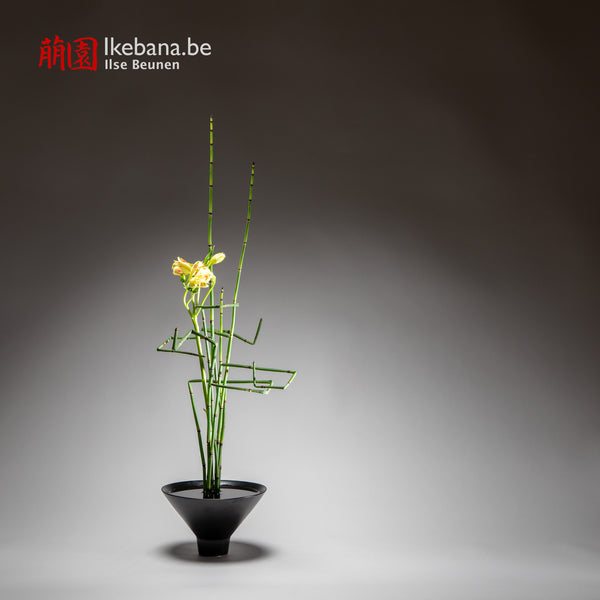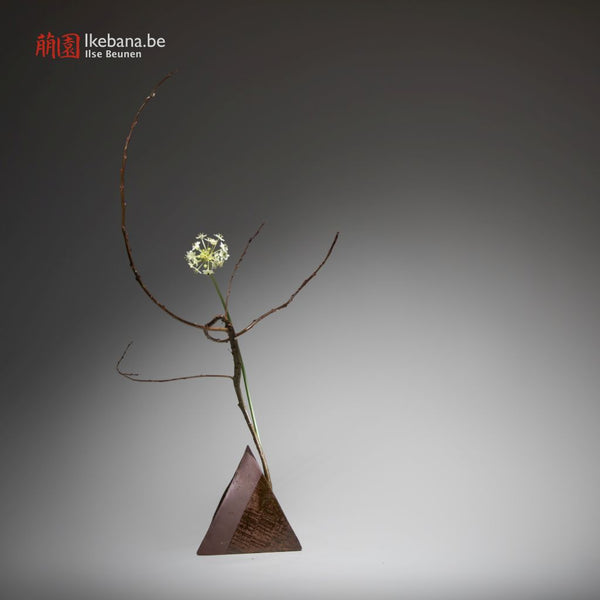The Diversity of Ikebana - by Ilse Beunen

Ikebana, the traditional Japanese art of flower arranging, is often perceived as a singular art form by those outside Japan. However, this perception barely scratches the surface of its diverse and rich heritage. With over 2,000 registered schools in Japan, ikebana is a vibrant mosaic of styles, each with its unique features and philosophies. The term '-Ryu,' commonly translated as 'School' in English, more accurately represents the concept of 'Style,' highlighting the individuality of each approach.
This diversity in ikebana is similar to the variety in music or painting. Just as music ranges from classical to jazz and rock and painting from realism to surrealism, ikebana encompasses a broad spectrum of styles. These styles have developed over centuries, beginning with the Ikenobo school—the very foundation of ikebana—and progressing to contemporary schools such as Sogetsu, Ohara, and Ichiyou.

Ikenobo is considered the oldest ikebana school, with origins dating back to the 15th century. It began at the Rokkakudo Temple in Kyoto, where priests used floral offerings to express the beauty of nature and the seasons. Ikenobo emphasizes harmony between heaven, human, and earth, which are represented in their arrangements by vertical, oblique, and horizontal lines, respectively.
Sogetsu is a modern, avant-garde approach to ikebana that allows for individual expression and creativity beyond traditional norms. Sogetsu's mantra is "Ikebana is for anybody, anytime, anywhere, and with any material." It encourages innovation and believes that ikebana can be practiced using a wide range of materials, not just flowers. Sogetsu allows practitioners to experiment with unconventional materials and compositions, often resulting in sculptural and abstract arrangements.
Founded by Unshin Ohara in the late 19th century, the Ohara school is known for its emphasis on bringing the beauty of natural landscapes into the home. It focuses on seasonal changes and the beauty of natural scenery. The school is renowned for its Moribana and Heika styles, which use shallow containers to create landscape-like arrangements. Ohara introduced the use of Western flowers and developed new styles and techniques to accommodate the changing tastes and interiors of modern homes.

An anecdote that illustrates the varied reactions to ikebana involves a conversation with a young florist I met while setting up at a florist exhibition in which I participated. Unaware of my background in ikebana and without seeing my work, she candidly criticized ikebana in very graphical terms. She even questioned if ikebana should be allowed at the florist exhibition. Overhearing the conversation, her mother, who had seen my work, joined the conversation and convinced her daughter to go and have a look at my ikebana work.

Luckily, the florist changed her opinion on ikebana. Though initially awkward, this incident serves as a reminder that, much like any art form, ikebana has its array of styles, appealing differently to each individual. Discovering ikebana is an exploration of taste, a journey to find the style that resonates with you, whether it be the structured elegance of Ikenobo or the innovative expressions of more modern schools.

